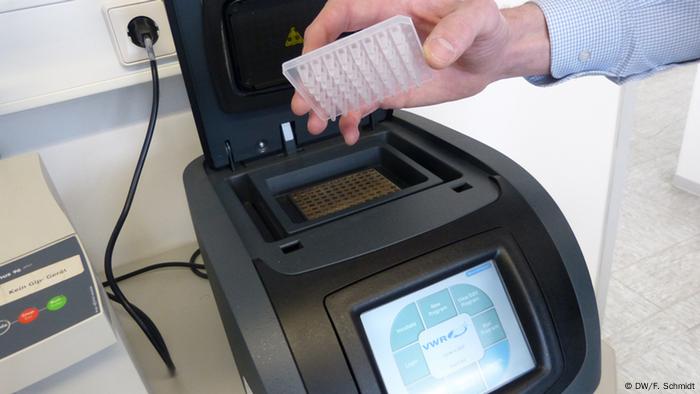Is the UK Complying With WHO Guidance on PCR Testing?
Fri 11:30 am +01:00, 5 Feb 2021
A Lockdown Sceptics reader wrote to his MP to ask whether the UK was complying with new WHO guidance, published in January, about how to use PCR tests correctly for COVID-19.
The MP put his questions to the House of Commons Library. The answer that came back was basically no, or rather, we leave it up to the labs to decide what to do. Here it is in full.
An article in the journal Science explains the cycle threshold in the following way:
“Standard tests identify SARS-CoV-2 infections by isolating and amplifying viral RNA using a procedure known as the polymerase chain reaction (PCR), which relies on multiple cycles of amplification to produce a detectable amount of RNA. The CT value is the number of cycles necessary to spot the virus; PCR machines stop running at that point. If a positive signal isn’t seen after 37 to 40 cycles, the test is negative (see “One number could help reveal how infectious a COVID-19 patient is. Should test results include it?“, Science, September 29th 2020)“
The cycle threshold (Ct) value can broadly tell you the concentration of “viral genetic material” in a patient sample following testing by RT-PCR. The Public Health England (PHE) publication on Understanding cycle threshold (Ct) in SARS-CoV-2 RT-PCR (October 2020) explains that:
“A low Ct indicates a high concentration of viral genetic material, which is typically associated with high risk of infectivity.
“A high Ct indicates a low concentration of viral genetic material which is typically associated with a lower risk of infectivity. In the context of an upper respiratory tract sample a high Ct may also represent scenarios where a higher risk of infection remains – for example, early infection, inadequately collected or degraded sample.
“A single Ct value in the absence of clinical context cannot be relied upon for decision making about a person’s infectivity.“
The Library is not in a position to know if the laboratories across the UK that are processing COVID-19 tests are providing information on Ct values to a central point (such as Departments of Health across the devolved administrations, Test and Trace in England); I cannot see that there is information publicly available detailing how each laboratory runs its PCR machines.
There is, however, more general information about Cycle Thresholds published by PHE. Its publication on Understanding cycle threshold (Ct) in SARS-CoV-2 RT-PCR explains that there are “many different SARS-CoV-2 RT-PCR assays/platforms in use across the UK” and that “each assay will have a slightly different limit of detection (LoD) – the lowest concentration of virus that can be reliably and consistently detected by the assay”.
The document goes on to caution against directly comparing cycle threshold values:
“Ct [cycle threshold] values cannot be directly compared between assays of different types due to variation in the sensitivity (limit of detection), chemistry of reagents, gene targets, cycle parameters, analytical interpretive methods, sample preparation and extraction techniques (p7). The same document states that ‘a typical RT-PCR assay will have a maximum of 40 thermal cycles’ (see p6). Further background on cycle threshold values can be found on pages 3 & 6 of the PHE document.“
Separate guidance published by PHE states that “All laboratories should determine the threshold for a positive result at the limit of detection based on the in-use assay” (PHE, “Research and analysis: Assurance of SARS-CoV-2 RNA positive results during periods of low prevalence“, Updated October 16th 2020).
Wales
Regarding the situation in Wales, the Welsh Parliament Research Service has produced a briefing on PCR testing in response to a petition considered by the Petitions Committee on “Abandon the rt-PCR test for covid-19 testing as its unfit for purpose” (see Welsh Parliament Research Service “Testing for COVID-19 using the rt-PCR test“, December 15th 2020). This notes that:
“The TAC report on the RT-PCR test confirmed (p.10) that multiple platforms (representing equipment from different manufacturers) were being used by Public Health Wales (PHW) to support the testing regime. In terms of the number of amplification cycles involved in RT-PCR, PHW responses to Freedom of Information requests (FOI 451 and FOI 461) indicate that: The real-time PCR assays in use in Wales for COVID-19 diagnostics all run for 45 cycles however, the cycle number where the sample is defined as RNA NOT DETECTED varies by platform and target gene detected by the system. This is defined by the manufacturer.“
Asymptomatic testing
The constituent also asked if those who are asymptomatic and receive a positive COVID-19 result are retested. I cannot see anything suggesting that those who are asymptomatic, and are tested using the RT-PCR test, would be retested on receipt of a positive result. There is guidance, however, that those who are asymptomatic and receive a positive result after using a lateral flow test would be required/offered to have a PCR test to confirm the result (see, for example, Birmingham City Council, “Covid-19 lateral flow device (LFD) testing information“, not dated).
https://lockdownsceptics.org/


